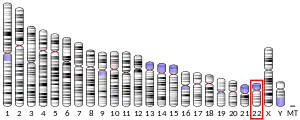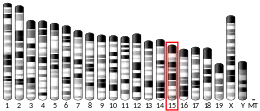| TCF20 | |||||||||||||||||||||||||||||||||||||||||||||||||||
|---|---|---|---|---|---|---|---|---|---|---|---|---|---|---|---|---|---|---|---|---|---|---|---|---|---|---|---|---|---|---|---|---|---|---|---|---|---|---|---|---|---|---|---|---|---|---|---|---|---|---|---|
| Identifiers | |||||||||||||||||||||||||||||||||||||||||||||||||||
| Aliases | TCF20, AR1, SPBP, TCF-20, transcription factor 20 (AR1), transcription factor 20, DDVIBA | ||||||||||||||||||||||||||||||||||||||||||||||||||
| External IDs | OMIM: 603107 MGI: 108399 HomoloGene: 4131 GeneCards: TCF20 | ||||||||||||||||||||||||||||||||||||||||||||||||||
| |||||||||||||||||||||||||||||||||||||||||||||||||||
| |||||||||||||||||||||||||||||||||||||||||||||||||||
| |||||||||||||||||||||||||||||||||||||||||||||||||||
| |||||||||||||||||||||||||||||||||||||||||||||||||||
| |||||||||||||||||||||||||||||||||||||||||||||||||||
| Wikidata | |||||||||||||||||||||||||||||||||||||||||||||||||||
| |||||||||||||||||||||||||||||||||||||||||||||||||||
Transcription factor 20 is a protein that in humans is encoded by the TCF20 gene.[5][6][7]
The protein encoded by this gene binds a platelet-derived growth factor-responsive element in the matrix metalloproteinase 3 (stromelysin 1) promoter. The protein localizes to the nucleus and displays DNA-binding and transactivation activities. It is thought to be a transcriptional coactivator, enhancing the activity of transcription factors such as JUN and SP1. Alternative splicing results in two transcript variants encoding different isoforms.[7]
Interactions
References
- 1 2 3 ENSG00000281897, ENSG00000262024, ENSG00000282892, ENSG00000283026, ENSG00000280467, ENSG00000100207, ENSG00000276461 GRCh38: Ensembl release 89: ENSG00000283681, ENSG00000281897, ENSG00000262024, ENSG00000282892, ENSG00000283026, ENSG00000280467, ENSG00000100207, ENSG00000276461 - Ensembl, May 2017
- 1 2 3 GRCm38: Ensembl release 89: ENSMUSG00000041852 - Ensembl, May 2017
- ↑ "Human PubMed Reference:". National Center for Biotechnology Information, U.S. National Library of Medicine.
- ↑ "Mouse PubMed Reference:". National Center for Biotechnology Information, U.S. National Library of Medicine.
- ↑ Rajadhyaksha A, Rivière M, Van Vooren P, Szpirer J, Szpirer C, Babin J, Bina M (October 1998). "Assignment of AR1, transcription factor 20 (TCF20), to human chromosome 22q13.3 with somatic cell hybrids and in situ hybridization". Cytogenetics and Cell Genetics. 81 (3–4): 176–7. doi:10.1159/000015021. PMID 9730594. S2CID 46832690.
- ↑ Rekdal C, Sjøttem E, Johansen T (December 2000). "The nuclear factor SPBP contains different functional domains and stimulates the activity of various transcriptional activators". The Journal of Biological Chemistry. 275 (51): 40288–300. doi:10.1074/jbc.M006978200. PMID 10995766.
- 1 2 "Entrez Gene: TCF20 transcription factor 20 (AR1)".
- ↑ Lyngsø C, Bouteiller G, Damgaard CK, Ryom D, Sanchez-Muñoz S, Nørby PL, Bonven BJ, Jørgensen P (August 2000). "Interaction between the transcription factor SPBP and the positive cofactor RNF4. An interplay between protein binding zinc fingers". The Journal of Biological Chemistry. 275 (34): 26144–9. doi:10.1074/jbc.M003405200. PMID 10849425.
Further reading
- Sanz L, Moscat J, Diaz-Meco MT (June 1995). "Molecular characterization of a novel transcription factor that controls stromelysin expression". Molecular and Cellular Biology. 15 (6): 3164–70. doi:10.1128/mcb.15.6.3164. PMC 230548. PMID 7760812.
- Kirstein M, Sanz L, Quiñones S, Moscat J, Diaz-Meco MT, Saus J (July 1996). "Cross-talk between different enhancer elements during mitogenic induction of the human stromelysin-1 gene". The Journal of Biological Chemistry. 271 (30): 18231–6. doi:10.1074/jbc.271.30.18231. PMID 8663478.
- Ohara O, Nagase T, Ishikawa K, Nakajima D, Ohira M, Seki N, Nomura N (February 1997). "Construction and characterization of human brain cDNA libraries suitable for analysis of cDNA clones encoding relatively large proteins". DNA Research. 4 (1): 53–9. CiteSeerX 10.1.1.325.2199. doi:10.1093/dnares/4.1.53. PMID 9179496.
- Dunham I, Shimizu N, Roe BA, Chissoe S, Hunt AR, Collins JE, Bruskiewich R, Beare DM, Clamp M, Smink LJ, Ainscough R, Almeida JP, Babbage A, Bagguley C, Bailey J, Barlow K, Bates KN, Beasley O, Bird CP, Blakey S, Bridgeman AM, Buck D, Burgess J, Burrill WD, O'Brien KP (December 1999). "The DNA sequence of human chromosome 22". Nature. 402 (6761): 489–95. Bibcode:1999Natur.402..489D. doi:10.1038/990031. PMID 10591208.
- Lyngsø C, Bouteiller G, Damgaard CK, Ryom D, Sanchez-Muñoz S, Nørby PL, Bonven BJ, Jørgensen P (August 2000). "Interaction between the transcription factor SPBP and the positive cofactor RNF4. An interplay between protein binding zinc fingers". The Journal of Biological Chemistry. 275 (34): 26144–9. doi:10.1074/jbc.M003405200. PMID 10849425.
- Beausoleil SA, Jedrychowski M, Schwartz D, Elias JE, Villén J, Li J, Cohn MA, Cantley LC, Gygi SP (August 2004). "Large-scale characterization of HeLa cell nuclear phosphoproteins". Proceedings of the National Academy of Sciences of the United States of America. 101 (33): 12130–5. Bibcode:2004PNAS..10112130B. doi:10.1073/pnas.0404720101. PMC 514446. PMID 15302935.
- Rush J, Moritz A, Lee KA, Guo A, Goss VL, Spek EJ, Zhang H, Zha XM, Polakiewicz RD, Comb MJ (January 2005). "Immunoaffinity profiling of tyrosine phosphorylation in cancer cells". Nature Biotechnology. 23 (1): 94–101. doi:10.1038/nbt1046. PMID 15592455. S2CID 7200157.
- Gburcik V, Bot N, Maggiolini M, Picard D (May 2005). "SPBP is a phosphoserine-specific repressor of estrogen receptor alpha". Molecular and Cellular Biology. 25 (9): 3421–30. doi:10.1128/MCB.25.9.3421-3430.2005. PMC 1084313. PMID 15831449.
- Olsen JV, Blagoev B, Gnad F, Macek B, Kumar C, Mortensen P, Mann M (November 2006). "Global, in vivo, and site-specific phosphorylation dynamics in signaling networks". Cell. 127 (3): 635–48. doi:10.1016/j.cell.2006.09.026. PMID 17081983.
- Sjøttem E, Rekdal C, Svineng G, Johnsen SS, Klenow H, Uglehus RD, Johansen T (2007). "The ePHD protein SPBP interacts with TopBP1 and together they co-operate to stimulate Ets1-mediated transcription". Nucleic Acids Research. 35 (19): 6648–62. doi:10.1093/nar/gkm739. PMC 2095823. PMID 17913746.
This article is issued from Wikipedia. The text is licensed under Creative Commons - Attribution - Sharealike. Additional terms may apply for the media files.




